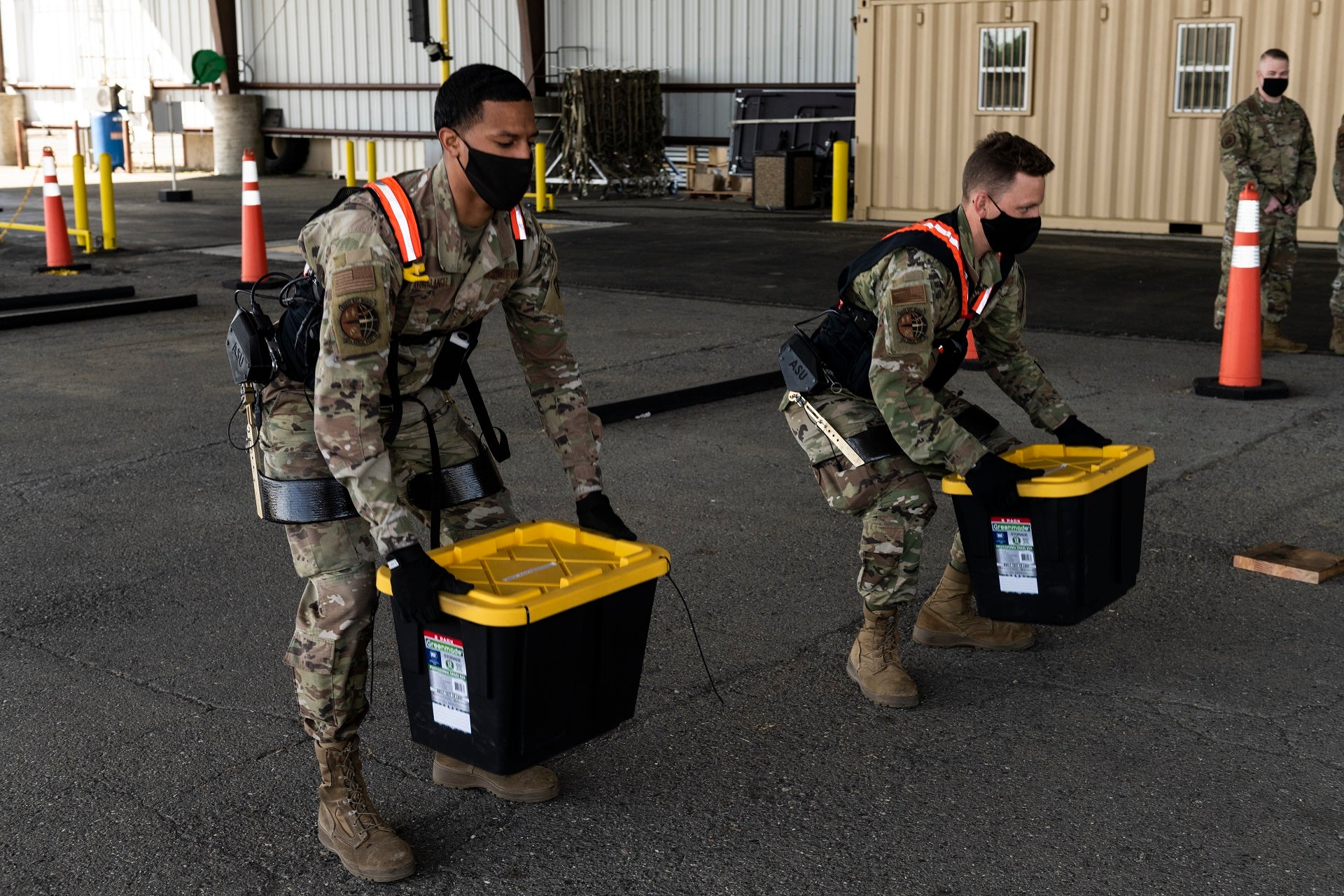
The US Air Force Life Cycle Management Center (AFLCMC) and Air Mobility Command (AMC) and Arizona State University (ASU) have teamed up for Aerial Port Exoskeleton development.
The new exoskeleton equipment is designed to reduce strain experienced by aerial porters when lifting various items while increasing safety.
It will be officially put to use at Travis Air Force Base (AFB). Currently, Travis AFB is acting as the test base for the new exoskeleton equipment.
If proven to be beneficial, the equipment will be used throughout the US Air Force (USAF).
Air Mobility Command innovations, systems and future command manager technical sergeant Landon Jensen said: “Aerial ports have a high injury rate in the airforce.
“That’s why we are looking into this kind of solution to help porters perform their duties more safely while also helping reduce the risk of injuries, so they are not suffering later in life.
“We began looking into this equipment because of the outcome of the 2019 Volpe study.”
The Volpe study was a US Department of Transportation (DoT) study that focused on ‘why retired aerial porters alone were costing upwards’ of $31m per annum on disability benefits.
Following the 2019 Volpe study results, the 60th Aerial Port Squadron leadership worked with external parties to develop a solution that will decrease the number of airmen leaving service with less suffering.
After a testing period of one month, the ‘airmen expressed the suits are a good investment and significantly reduces load bearing’.
AFLCMC programme manager 2nd lieutenant Aaron Cox said that the project would not have been possible without the help of ASU.
60th APS aerial porter 1st Class airman Xaviar Archangel said: “There are small things here and there where the suits can be improved to make them more user friendly.
“These suits are pretty light. You hardly notice you are wearing them aside from the bulk around the waist.
“But other than that, I could honestly wear these for an extended period with no problems if necessary.”



